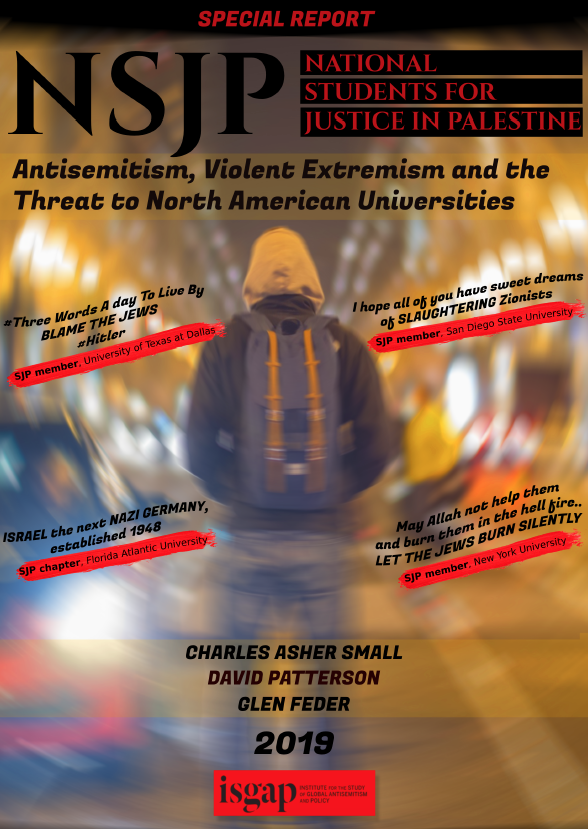National Students for Justice in Palestine (NSJP) and the Promotion of Hate and Antisemitism on the University Campus: The Threat to Academic Freedom
Report by the Institute for the Study of Global Antisemitism and Policy (ISGAP)
Dr. Charles Asher Small, Executive Director, ISGAP, Visiting Scholar, St. Antony’s College, Oxford
Professor David Patterson, University of Texas at Dallas
Dr. Glen Feder, Research Scholar, ISGAP
Forward by Natan Sharansky, Chair of ISGAP
Justice is an end for which all people strive, and the Palestinian people deserves it no less than any other. Yet no understanding of justice is worth the name if, in advancing the aims of one group, it disallows the legitimate cause of another. Thus, when an organization denies Israel’s right to exist as a Jewish and democratic state; when it demonizes Israel by comparing the Jewish state to Nazi Germany or South African apartheid; and when in making demands of Israel it applies double-standards that are not applied to any other country in the world, this organization is not seeking justice. Rather, it is promoting antisemitism, plain and simple.
The reason for this is that demonization, delegitimization, and double standards against Jews were the main tools of antisemites for thousands of years. Now, they are being applied to the Jewish collective in the State of Israel.
Indeed, after ongoing debates, the international community has agreed upon a set of criteria for determining when criticism of Israel is antisemitic. Applying these criteria, the following report analyzes the officially proclaimed aims of Students for Justice in Palestine, and the views of its central figures, and unmasks them as fundamentally antisemitic − in nature. The findings herein can certainly be used by those on campuses seeking to combat the pernicious influence of this group. More than that, I hope they will open the eyes of everyone who sincerely wants to better the world. The way to justice is, clearly, not through this organization.
To read the report please click below:

